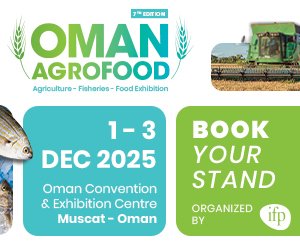As global demand for sustainable practices intensifies, green certifications are fast becoming essential for food producers in the GCC. These credentials not only enhance credibility and promote eco-conscious operations, but also open doors to lucrative international markets. However, the journey toward certification is not without its hurdles—ranging from high costs to infrastructure limitations. Navigating both the benefits and challenges is key to building a resilient and globally competitive food sector.
The Strategic Value of Green Certification
For food producers in the Gulf, adopting green certifications reflects a commitment to environmental responsibility while strengthening global market relevance. Here are some of the key advantages and obstacles shaping the region’s green certification landscape:
1. Greater Access to Global Markets
Certified producers are well-positioned to meet the rising demand for sustainably sourced food in Europe, North America, and beyond. Green labels help secure placements in global supply chains and earn the trust of environmentally conscious buyers.
2. Strengthened Brand Reputation
Certifications such as ISO 14001 or GlobalG.A.P. serve as proof of transparency and ethical practices. For consumers, these marks of quality foster confidence and brand loyalty—especially in a region where awareness around sustainability is rapidly increasing.
3. Operational Efficiencies
Though initial investment can be significant, certification often leads to better water, energy, and waste management. Over time, these efficiencies lower operational costs and free up resources for growth and innovation.
4. Government Incentives
Several GCC governments—most notably the UAE—are offering subsidies, training programs, and regulatory incentives to support green transitions in agriculture and food production. These initiatives help offset certification costs and align private sector efforts with national climate goals.
The Roadblocks to Certification
Despite these advantages, green certification presents tangible challenges for producers, especially small and medium-sized enterprises:
5. Regulatory and Compliance Complexity
Managing multiple certification standards—often involving audits, documentation, and continuous compliance—requires dedicated teams and resources. This complexity can be overwhelming for smaller players.
6. High Upfront and Maintenance Costs
From third-party audits to infrastructure upgrades and employee training, the financial burden of certification can be a barrier to entry—particularly for small farms and processing facilities.
7. Limited Infrastructure
In many parts of the GCC, sustainable agriculture still lacks the supporting infrastructure—such as green supply chains, organic inputs, or waste treatment facilities—needed to meet certification standards with ease.
Conclusion
Green certifications offer a clear path toward sustainable growth, consumer trust, and international expansion for GCC food producers. But realizing this potential requires a strategic approach that includes financial planning, government support, and long-term commitment. With the right foundations in place, these certifications can play a transformative role in shaping a resilient and responsible regional food industry.
Source: qatarmoments




















































































